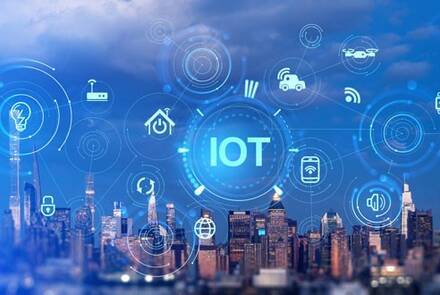The IoT Revolution in Disaster Preparedness and Response
In the dynamic landscape of urban living, the integration of Internet of Things (IoT) technologies is ushering in a new era of resilience and responsiveness in the face of disasters. Smart cities, with their interconnected networks of sensors and devices, are at the forefront of revolutionizing disaster preparedness and response. From early warning systems to real-time crisis management, this blog article explores how IoT technologies are becoming the linchpin in safeguarding cities against unforeseen challenges.
- Early Warning Systems
One of the primary ways IoT is transforming disaster preparedness is through the implementation of early warning systems. Connected sensors, strategically placed across cities, monitor environmental factors such as seismic activity, weather patterns, and air quality. In the event of anomalies, these sensors trigger automated alerts, providing authorities and residents with crucial early warnings. This proactive approach enables timely evacuation, preparation, and the swift mobilization of resources to mitigate potential disasters. - Real-Time Environmental Monitoring
IoT-enabled environmental monitoring plays a pivotal role in disaster preparedness. Sensors measuring factors like temperature, humidity, and wind speed provide real-time data for analysis. This information is invaluable in predicting the behavior of natural disasters such as wildfires, floods, or hurricanes. By understanding these conditions in real-time, cities can implement targeted interventions to mitigate risks and protect vulnerable areas. - Smart Infrastructure
The integration of IoT in the infrastructure of smart cities enhances their resilience against disasters. Connected sensors on critical infrastructure elements, such as bridges and buildings, monitor structural integrity in real-time. This continuous monitoring allows for the early detection of potential issues, enabling preventive maintenance and reducing the risk of infrastructure failure during disasters. - Emergency Response Coordination
In the aftermath of a disaster, the need for seamless coordination among emergency responders is paramount. IoT technologies facilitate a connected ecosystem where data from various sources, including sensors, drones, and wearable devices, is integrated and analyzed in real-time. This data-driven approach enhances situational awareness, enabling more effective and targeted emergency response efforts. - Smart Traffic Management
IoT plays a crucial role in optimizing traffic flow during evacuations. Connected traffic lights, variable message signs, and smart navigation systems use real-time data to dynamically adjust routes and manage traffic congestion (See also: The IoT Revolution in Transportation). This not only ensures the efficient evacuation of residents but also facilitates the swift movement of emergency response vehicles to affected areas. - Wearable Devices
IoT-enabled wearable devices contribute to personalized disaster preparedness. Smartwatches and other wearable gadgets equipped with sensors can monitor vital signs and detect anomalies. In the event of a crisis, this data can be transmitted to emergency services, providing real-time information on the health and well-being of individuals. This level of connectivity empowers both responders and individuals during disasters. - Post-Disaster Recovery
IoT technologies continue to play a crucial role in the post-disaster phase. Connected devices and sensors aid in assessing damage, prioritizing recovery efforts, and monitoring the effectiveness of rehabilitation initiatives. This data-driven approach not only expedites the recovery process but also informs long-term urban planning to build more resilient cities in the face of future disasters.
Challenges and Ethical Considerations
While the benefits of IoT in disaster preparedness and response are evident, challenges such as data privacy, security, and the potential for false alarms must be addressed. Striking a balance between harnessing the power of data and safeguarding individual rights is crucial in the responsible deployment of these technologies.
As cities continue to face the unpredictable challenges of a changing world, the integration of IoT technologies in disaster preparedness and response stands as a beacon of resilience. Smart cities, leveraging the power of interconnected devices and real-time data analysis, are rewriting the narrative of how urban areas confront disasters. In this era of IoT-driven preparedness, the vision is clear: a future where cities not only withstand the unforeseen challenges but emerge stronger, more connected, and more resilient than ever before.
For more information about Trigyn’s Smart City & IoT Solutions, Contact Us.






